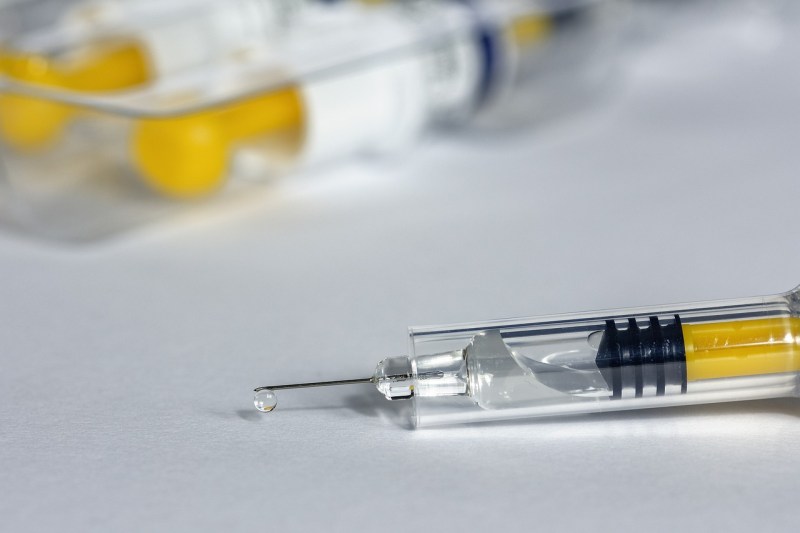Stanford Medicine researchers are recruiting volunteers to join Johnson & Johnson’s Phase 3 trial for their COVID-19 vaccine. If proven safe and effective, the vaccine could be approved through emergency-use authorization by early 2021.
Researchers are cautiously optimistic about the future of vaccine development, in part due to Pfizer’s and Moderna’s recent successes. With Johnson & Johnson’s vaccine undergoing clinical trials, they hope it will add to the diversity of vaccines that may be distributed worldwide.
60,000 test subjects across up to 215 global sites will be injected with the active vaccine or a placebo, according to a Johnson & Johnson news release. According to the study’s principal investigator and medicine assistant professor Philip Grant, Stanford will follow 1,000 participants for safety and development of infection across two years. Participants who were given the placebo will be offered the active vaccine in the event that the vaccine is proven effective before the end of the two years.
To evaluate the vaccine, researchers will track any side effects associated with the vaccine or placebo, the severity and number of COVID-19 cases and participants’ immunological response to the vaccine over time, according to Sumana Shashidhar. Shadshidar serves as the clinical research manager for operations at the Stanford Center for Clinical Research at the medical school.
While the vaccine development pipeline can take up to a decade between discovery and approval, Johnson & Johnson has accelerated the process. By leveraging their subsidiary Janssen’s AdVac technology, they use the shell of deactivated adenoviruses to carry the genetic code of the harmless coronavirus spike protein into cells. As cells create the protein, the body’s immune response is stimulated.
Johnson & Johnson combined testing Phases I and II, which normally involve evaluating the vaccine in small groups of adults and determining the most effective dose, into one step known as Phase 1/2a. Now in Phase III, researchers will administer the vaccine to large groups of healthy adults in areas with the predicted highest transmission rates of COVID-19.
“The regulatory and start-up processes have been condensed but the timeline for the Phase [III] studies are pretty typical,” Grant wrote. Despite the expedited early stages, he expressed confidence in the vaccine’s safety.
“Every vaccine that we give has some risk. We will have vaccinated 60,000 participants with the J+J vaccine so will have a robust dataset related to safety,” Grant wrote. “That being said, post-marketing data might still reveal very rare adverse events, but this potential risk pales in comparison to the risk of COVID-19 infection.”
Shashidhar, who has overseen multiple COVID-19 studies, said she is confident of Stanford’s multidisciplinary team’s ability to handle a study of this “magnitude and impact.”
“In terms of coordination, we run this trial much as any other interventional clinical research trial,” she wrote. “We follow the protocol, and focus on the participants in terms of the science and their safety, and also ensure that they have the best participant experience our team can provide them.”
The Johnson & Johnson vaccine is one of the four vaccines currently undergoing Phase III clinical trials in the U.S. Pfizer and Moderna reported last week that their mRNA vaccine candidates were 95% and 94.5% effective, respectively.
“It is very encouraging that the immune response we saw with these vaccines correlated to a high degree of clinical protection,” Grant wrote. “[It] definitely gives folks hope that many different platforms will work similarly.”
While the data is promising, some logistics of distributing the vaccines are still under development.
According to biochemistry associate professor Rhiju Das, the mRNA vaccines are unlikely to enable mass immunization of billions of people without stabilization. Stabilization involves protecting mRNA against chemical breakdown.
“Both Pfizer and Moderna’s mRNA vaccines have to be shipped frozen,” Das wrote in a statement to The Daily. “You’ve probably seen articles… describing logistical issues involved in distributing these medicines compared to, say, flu shots, which can be shipped in prefilled syringes under standard refrigeration.”
The CDC advises facilities to handle large quantities of dry ice to store Pfizer’s vaccine at temperatures around -103 degrees Fahrenheit. The material’s hazards, alongside its short supply across the country, pose significant concerns for the vaccine’s distribution.
“There was essentially no basic research being carried out on the mRNA stabilization problem by academics or industry before COVID-19,” Das wrote.
In Das’ lab, researchers are computationally redesigning mRNAs to fold into tightly structured packages that can remain stable in syringe buffers. While his work may improve future mRNA vaccines, Das believes in the value of developing multiple types of vaccines.
“Some of the other currently tested vaccines will be single dose and could be shipped more easily than mRNA vaccines,” Das wrote. “But imagine that the coronavirus evolves — then it will be advantageous to also have the quick-to-deploy mRNA vaccines in production, since their sequences can be changed and new doses [are] manufacture[d] on the timescale of weeks.”
Johnson & Johnson’s vaccine is predicted to be stable at 35.6 to 46.4 degrees Fahrenheit. At the start of the September Phase III trial, the company announced that it would “not require new infrastructure” for distribution.
Grant expects to see data from Johnson & Johnson by March or April, depending on the speed of enrolling participants and the number of infections.
Contact Jodie Meng at jomeng ‘at’ stanford.edu
